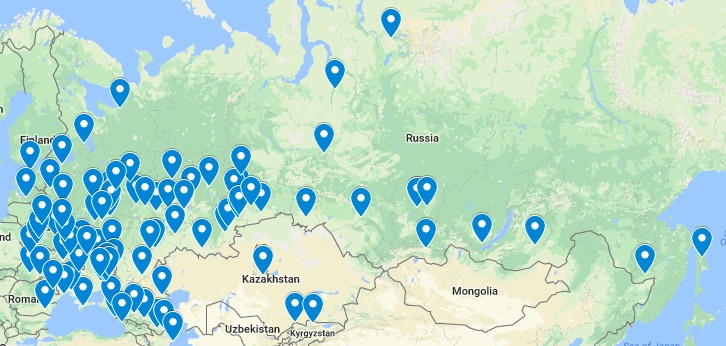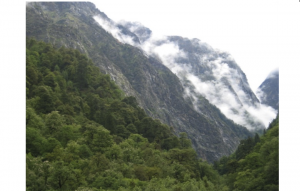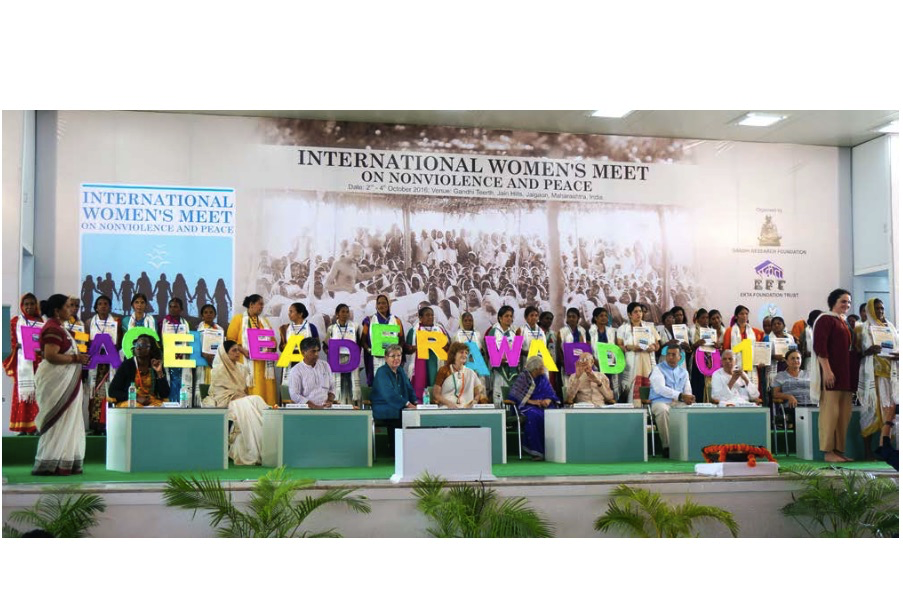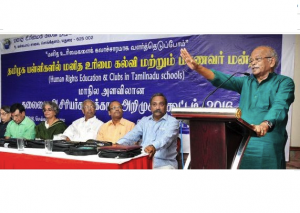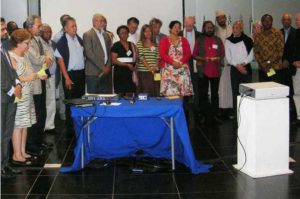FREE FLOW OF INFORMATION
A survey by CPNN
The following 67 events in 20 Asian countries were listed in “Google News” during the week of September 21-28 under the key words “International day of peace” and 国际和平日 (Chinese). This includes also some events listed on the websites of the Global Feast for Peace, the Peace Wave, the event map for the International Day of Peace, and the Campaign Nonviolence. No doubt there were many events listed on the Internet in languages other than those for which we searched.
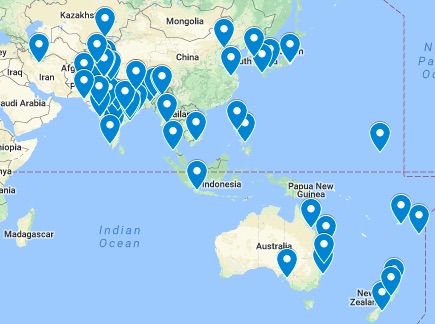
Here are excerpts from the articles.
ASHBURTON , AUSTRALIA : Love Peace Harmony Fun : Afternoon to celebrate International Day of Peace for 2017.
BUNDABERG, AUSTRALIA : The Bundaberg Lions Club joined forces with Bundaberg Regional Council to unveil a peace pole in Buss Park yesterday.
SYDNEY, AUSTRALIA : In Sydney, an International Peace Day Gala Dinner Convention sponsored by the United Nations Association of Australia Peace Program was organised by its very capable director Dr Zeny Edwards. The event, which was held at Novotel Hotel, Darling Harbour, was attended by dedicated diplomats from various countries, Australian peace advocates and peace volunteers.
SYDNEY, AUSTRALIA : September 21 was the annual United Nations “International Day of Peace”, and this Sunday 24th September the 10.30 Mass is celebrated in conjunction with the United Nations Association of Australia as the annual Choral Mass for Peace.
DHAKA, BANGLADESH : On September 23, 2017, Junior Chamber International (JCI) Bangladesh organised ‘2017 JCI Bangladesh Peace is Possible Awards’ at Spectra Convention Centre in Gulshan 1 of Dhaka city.
DHAKA, BANGLADESH : In observance of International Day of Peace, UNIC Dhaka jointly with the Dhakabashi organization and the National Federation of Youth Organizations in Bangladesh (NFYOB) organized a Children Art Contest and Rally respectively at Hazaribagh Community Centre and Hazaribagh Park area on 21 September 2017.
BEIJING, CHINA :On September 21, at the occasion of the commemoration of International Day of Peace, the China World Peace Foundation, the Beijing International Peace Culture Foundation and the United Nations Educational, Scientific and Cultural Organization (UNESCO) The 4th “Peace Court Peace Festival” was held in Beijing. Envoys came from more than 100 countries on five continents, international organizations, government representatives, business representatives, experts and scholars and representatives of young people. The theme of the “Peace Court” is the “peace of mind” and the President of the China World Peace Foundation, Mr. Li Ruohong, read the message from the Director-General of UNESCO, Irina Bokova and said that UN Secretary-General Antonio Guterres called on governments, civil society and international and regional institutions to work together to maintain peace (from Chinese original).
NANJING, CHINA : Today (September 21) is the 36th “International Day of Peace”, and the anniversary of the Japanese invasion of Nanjing. At the Massacre Memorial Hall Peace Square, there were peace message signature activities. Visitors from across the country have signed the memorial Hall Peace Square signature message. Ms. Ma from Anhui, said her first visit to the memorial hall, visiting the “million people pit” site, struck her heart like a knife. Memories of the Japanese violence at that time is really hateful Peace is too precious. Officers and men lined up in front of the Statue of Liberty to take pictures of the world forever peace symbol. (from Chinese original)
BANGALORE, INDIA : Celebration of international day of peace 2017 @ gfgc k.r.puram, bangalore (college)
BHUBANESWAR, INDIA : To celebrate International Day of Peace on Thursday, students from eight educational institutions participated in a skit competition on the theme of peace and harmony in the afternoon.
HYDERABAD, INDIA :. Marking the occasion, of the International Day of Peace . . . and contributing to a culture of peace . . . Ram Chandra Mission (SRCM, a UN NGO) that spreads the message of ‘heartfulness meditation’ technique, conducted the ‘Making peaceful, powerful’ session at Shilpakala Vedika, Shilparamam, Hyderabad. The session included a talk by president of SRCM Kamlesh D Patel (Daaji) and an experience of the ‘Heartfulness meditation’ session for over 1,500 IPS, IRS, doctors and other prominent members of the society.
JAMMU, INDIA : The Panun Kashmir Human Rights Committee organised a special programme to observe the International Day of Peace here today. . . .. The programme was presided over by Ashwani Chrungoo, Panun Kashmir president and chairman, Human Rights Committee. Others who attended the programme included Prof ML Raina, chairman, Political Affairs Committee, Upinder Kaul, general secretary and Virender Raina, national spokesperson of Panun Kashmir.
KALINGA, INDIA : The International Peace Day was observed at the Kalinga Institute of Social Sciences on 21 September 2017 on the theme #PeaceFirst. The students of KISS actively took part in the functions throughout the day. The students wrote Peace Wishes on the Peace Wish Tree. A human peace formation was created by the students of KISS to promote peace awareness.
LAITUMKHRAH, INDIA :To commemorate World Peace Day, the Lou Majaw Foundation in collaboration with the Department of Art and Culture observed the occasion with poetry and music at Andante Music School, Laitumkhrah. Several music bands including Haystack Ladies, an all ladies band from Tura, Tengnang D Sangma, the Fourth Element, Empirical Tribe, Nexus, Twilight a newly formed band from Jowai, Felixes and Lou Majaw himself rocked the crowd with their excellent musical forte.
KOHIMA, NAGALAND, INDIA : The Nagaland State Bharat Scouts & Guides (NSBSG) observed the International Day of Peace 2017 at Mezhür Higher Secondary School, Kohima on Sep. 21, where state coordinator of State Resource Centre for Women, Gracy Ayee, talked on “youth speech for peace.”
NAGALAND, INDIA : The International Day of Peace was observed in Dimapur and Peren districts. Peace Channel observed International Day of Peace-cum-12th Peace Channel foundation day in collaboration with Community Education Centre School (CECS). Speaking on the occasion, Dimapur district co-ordinator, Garrol Lotha asserted that since its inception Peace Channel have been relentlessly rendering its service to the people and effectively working to promote culture of peace in the society. The highlights of the programme include peace anthem, special number by the peace club members of CECS, group activity on the issues related to peace and conflict in the society initiated by NEISSR interns, vote of thanks delivered by teacher animator of the Peace Club, Maong followed by a Peace Prayer.
NAGPUR, INDIA : The India Peace Centre, on September 21, 2017, organised a ‘Peace Bicycle Rally’ in Nagpur to celebrate International Day of Peace. . . . Speaking on the occasion, Dr Amit Samarth appealed to participants to adapt to cycling as a pollution-free and fitness oriented means of transport, and lauded the efforts of India Peace Centre in using bicycle as an instrument to spread the message of peace.
TEHERAN, IRAN :The First Expert Meeting on Youth and Urban Peace was held in the Iranian capital on the occasion of International Day of Peace. The event was organized by the Young Shahryaran Club affiliated to Tehran Municipality and supported by the United Nations Information Center (UNIC). UNIC Director Maria Dotsenko, Head of Elite Commission of Iran’s Expediency Council’s Secretariat Mohammad Ebrahim Maddahi and Head of Environment Commission of Tehran City Council Zahra Sadreazam-Noori were the main speakers of the meeting.
BISHKEK, KYRGYZSTAN : Youth peer mentors from around Kyrgyzstan climbed a mountain and hauled hundreds of rocks to craft this awesome peace sign in Koh Tash village near Bishkek to highlight the importance of peacebuilding. The mentors are taking part in leadership training this week as part of our constructive dialogues on religion and democracy project.
(Survey continued in right column)
What has happened this year (2017) for the International Day of Peace?
(Survey continued from left column)
YANGON, MYANMAR : We had a great turnout on Saturday for our #PeaceDayMyanmar celebration with Moving Forward Together in Mahabandoola Park, Yangon. Lots of people braved the rain to listen to live music and poetry and to share messages of peace. Below, reggae artist Saw Poe Kwar performs songs of peace, harmony and tolerance to a big crowd.
PAITA, NOUVELLE CALEDONIE (French territory) : On the occasion of the International Day of Peace, and dressed in the colors of the rainbow, nearly a thousand schoolchildren from the private schools Luc-Amoura and Dumbéa-sur-Mer gathered yesterday at the Arena of the South to present their work on the theme of Peace: “Pacific-Actions”.
ISLAMABAD, PAKISTAN : Young students of Roots Garden Schools, Roots IVY Schools and Roots DHA1 celebrated ‘International Day of Peace’ to highlight the significance of world peace and harmony by expressing their heartfelt feelings, compassionate ideas and visions of a peaceful world by singing a special peace song by the school choir that sung, “Long live absolute world peace” at a ceremony held in Islamabad.
MULTAN, PAKISTAN : UPF Pakistan in collaboration with Multan Chamber of Commerce and Industry organized a seminar on UN international day of Peace Celebrations, on September 21, 2017. The theme was “Together for Peace: Respect, Safety and Dignity for All”.
LAHORE, PAKISTAN : Walks, seminars, vigils held to mark International Day of Peace
LAHORE, PAKISTAN : The interfaith groups in Pakistan dedicated the International Day of Peace on Sept. 21 to Rohingya refugees who fled violence in Myanmar’s western Rakhine state. Archbishop Sebastian Shaw of Lahore chaired an inter-religious seminar in Lahore at the Dominican Peace Centre where prayers, speeches, poetry, songs and candles vigil were held for the Muslim minority, at least 420,000 of whom have fled to neighboring Bangladesh. United Religions Initiative Pakistan was the main organizer.
LAHORE, PAKISTAN : 21st September was observed as the International Day of Peace at Lahore College for Women University.
CEBU, PHILIPPINES : So Alive led the International Day of Peace celebration at the SM City food court on September 21, last Thursday. An Interfaith Prayer of the Nations opened the program. The national anthem was sung with a dance of OLJLC Performing Arts Group.They were attired to represent different communities of our islands. . . There were many songs and messages of peace.
QUEZON CITY, PHILIPPINES : On Saturday, the #Everydaypeace Concert in Quezon City saw the launch of our new app in the Philippines promoting the idea that ‘peace is within our power’, plus the new single Kalinaw by music icon Dong Abay.
PAPEETE, TAHITI (French territory) : The Peace Concert, held on Friday 29th September at 19:30 in the main Hall of the City Hall of Pirae, is the 13th artistic and charity gala organized jointly by the Art Conservatory and Soroptimist International Charity Club Tahiti / Papeete from the beginning of their collaboration. The Tipaerui Institution will engage 40 volunteer artists and volunteers, including 11 professors and teachers, 22 high-level students and seven musicians (traditional orchestra), who will offer the general public a first part of traditional dance and a second part of chamber music.
TONGATAPU, TONGA : Some 35 girls from various secondary schools in Tongatapu are holding a Girls Empowerment Camp from September 19-23 as part of activities marking the International Day of Peace
In addition to the above events with links on the Internet, there are a number of events in Asia listed on the event map for the International Day of Peace.
TOWNSVILLE, AUSTRALIA held Gathering in peace for conversation and prayer.
ADELAIDE, AUSTRALIA held a water ceremony for peace on the banks of the Torrens River.
ARMIDALE, AUSTRALIA had presentations and lectures on Peace, with multicultural food and music.
UNHAM, INDONESIA held a memorial ceremony and seminar.
JAKARTA, INDONESIA: Students created Graphic novels to promote a Culture of Peace.
YOKOHAMA, JAPAN : The United For Peace Film Festival (UFPFF) is held every year on September 21st, the United Nations International ‘Peace Day’.
CANTERBURY, NEW ZEALAND : A small but perfectly formed group of people gathered in the Botanic Gardens to ring World Peace Bell.
TAURANGA, NEW ZEALAND: A meditation for personal and world peace was held on the beach in Tauranga
WHANGANUI, NEW ZEALAND : Panel discussion on the annual theme, “Together for Peace: Respect, Safety and Dignity for All”.
RAWAI PHUKET, THAILAND : Peace picnic at Palm House Primary School
HO CHI MINH CITY, VIETNAM : Our Pre-school is making an art installation of pinwheels to celebrate peace
Some Asian events are listed on the Peace Wave webpage of the International Peace Bureau:
SUVA, FIJI : Peace Wave teach-in at the University of the South Pacific
INDIA: activities for the Peace Wave in the following cities:
– JAMMU: Global Network Against Weapons and Nuclear Power in Space
– VISAKHAPATNAM: Peace March, meeting and signature drive.
– PARVATIPURAM: Meeting and signature drive.
– NAGPUR: (1) Meetings and signature drive and (2) Meeting, photo exhibition and signature drive.
– BHUBANESWAR: Meetings and signature drive, Organizer: Mr. Maheswar Raut.
– INDORE: Meeting and signature drive.
– DIDGHAPANDA: Meeting and signature drive.
HIROSHIMA, NAGASAKI & TOKYO, JAPAN : At noon, September 20, Gensuikyo will declare the start of the “Peace Wave”
MARSHALL ISLANDS : Desmond Narain Doulatram, REACH-MI (Radiation Exposure Awareness Crusaders for Humanity
TAURANGA, NEW ZEALAND : candlelit vigil every evening from 20th – 26th September
SEOUL, REPUBLIC OF KOREA : Press Conference, rallies and performances are planned during Peace Wave campaign period.
Many cities and communities are members of the International Peace Cities network and the following are listed on the Global Feast Map as celebrating a feast to mark the International Day of Peace. They include:
INDIA: NAGPUR, KOCHI, SRINAGAR, RAIPUR, PIRWADHAI, MUMBAI, CHANDIGARH, GOYA
PAKISTAN: AHMEDABAD, QUETTA, MULTAN, ISLAMABAD, MURIDKE, KARACHI, CHITRAL-KHYBER
NEPAL: KATMANDU, LALITPUR
PHILIPPINES: MATAKI
THAILAND: PATHUTHANI
Campaign Nonviolence events took place in:
AFGHANISTAN, KABUL (involving participants from all Afghan provinces)
AUSTRALIA: ADELAIDE, PARKVILLE AND MELBOURNE
INDIA, CHANDIGARH
IRAQ, KURDiSTAN (36 peace actions and events)
